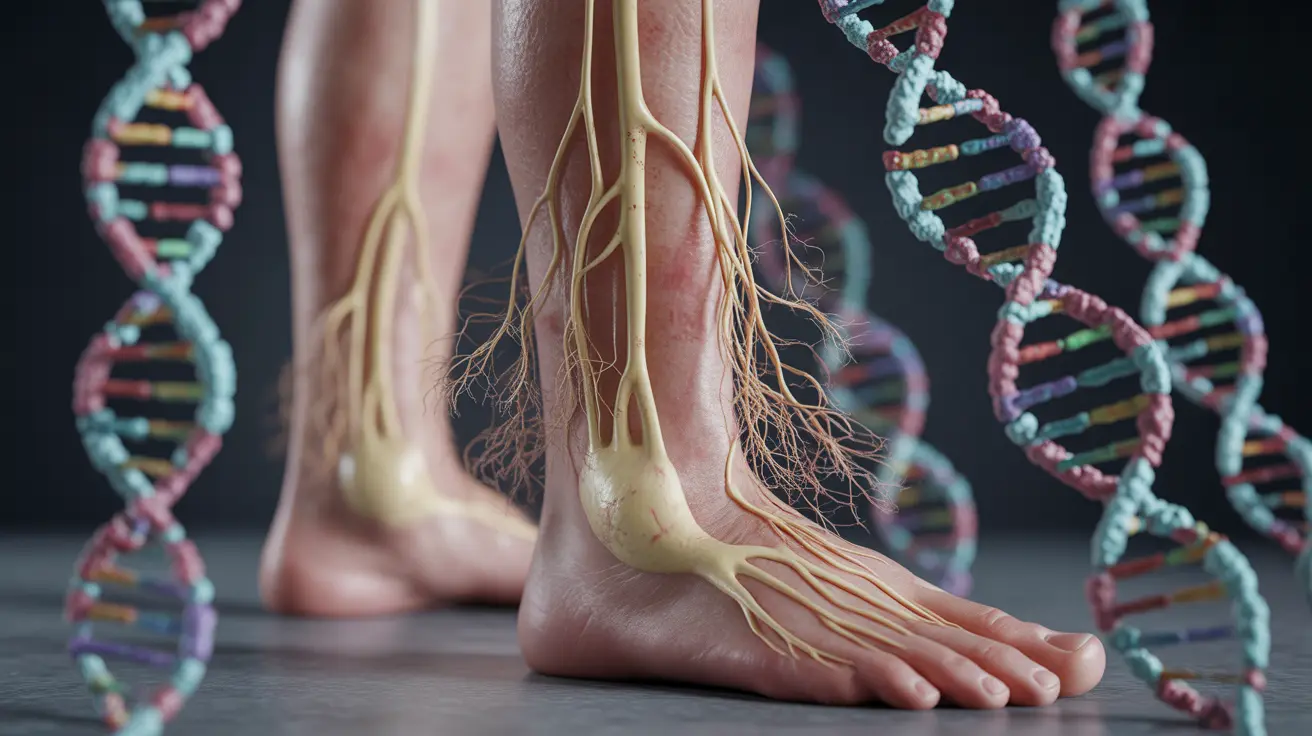Charcot-Marie-Tooth disease (CMT) represents one of the most common inherited neurological disorders, affecting approximately 1 in 2,500 people worldwide. This progressive condition impacts the peripheral nerves, which carry signals between the brain and spinal cord to muscles and sensory organs. Understanding its history, causes, and manifestations is crucial for both patients and healthcare providers.
While the name might seem unusual, it reflects an important piece of medical history and collaboration that led to our understanding of this condition. Let's explore the complete picture of CMT, from its historical naming to its modern clinical understanding.
The Historical Origins of the Name
Charcot-Marie-Tooth disease bears the names of three pioneering neurologists who first described it in 1886: Jean-Martin Charcot, Pierre Marie, and Howard Henry Tooth. Each of these physicians made significant contributions to understanding this hereditary neuropathy. Dr. Charcot and Dr. Marie published their findings in Paris, while Dr. Tooth independently described the same condition in London almost simultaneously.
Understanding the Genetic Basis
CMT is primarily a hereditary condition that affects the genes responsible for producing proteins essential for peripheral nerve function. These genetic mutations can be inherited in several patterns, including:
- Autosomal dominant inheritance
- Autosomal recessive inheritance
- X-linked inheritance
The specific genetic mutation determines not only the inheritance pattern but also influences the type of CMT a person develops and its severity.
Primary Symptoms and Manifestations
The hallmark symptoms of CMT typically begin in the feet and legs, but can eventually affect other areas of the body. Common signs include:
- Muscle weakness in feet and lower legs
- High-arched feet or flat feet
- Frequent tripping or falls
- Decreased muscle mass in lower legs
- Difficulty with balance and coordination
- Decreased sensation in feet and legs
Beyond the Lower Extremities
While CMT is often associated with foot and leg symptoms, it can affect multiple areas of the body. As the disease progresses, patients may experience:
- Hand weakness and decreased fine motor skills
- Muscle cramping
- Changes in gait
- Reduced reflexes
- Scoliosis in some cases
Classification and Types
CMT is classified into several main types, each with distinct characteristics:
Type 1 (CMT1)
Characterized by slow nerve conduction velocities and demyelination of peripheral nerves.
Type 2 (CMT2)
Features normal or near-normal nerve conduction but affects the axons of peripheral nerves.
Type 3 (CMT3)
Also known as Dejerine-Sottas disease, this is a more severe, early-onset form.
Type 4 (CMT4)
Represents various rare forms inherited in an autosomal recessive pattern.
Frequently Asked Questions
Why is Charcot-Marie-Tooth disease named after three doctors?
The disease is named after Jean-Martin Charcot, Pierre Marie, and Howard Henry Tooth, who independently documented and described the condition in 1886. Charcot and Marie published their findings in Paris, while Tooth published his observations in London, leading to the combined naming of the condition.
What are the main symptoms that indicate Charcot-Marie-Tooth disease?
The primary symptoms include muscle weakness in the feet and lower legs, high-arched or flat feet, frequent tripping, decreased muscle mass in lower legs, impaired balance, and reduced sensation in the extremities.
How is Charcot-Marie-Tooth disease inherited and what causes it genetically?
CMT is inherited through various patterns including autosomal dominant, autosomal recessive, and X-linked inheritance. It's caused by mutations in genes responsible for producing proteins essential for peripheral nerve function and maintenance.
Can Charcot-Marie-Tooth disease affect areas other than the feet and legs?
Yes, CMT can affect multiple areas of the body. While it typically begins in the feet and legs, it can progress to impact hand strength, fine motor skills, and may cause muscle cramping throughout the body. Some patients may also develop scoliosis.
What are the different types of Charcot-Marie-Tooth disease and how are they classified?
CMT is classified into several main types: CMT1 (characterized by demyelination), CMT2 (axonal type), CMT3 (Dejerine-Sottas disease), and CMT4 (recessive forms). Each type has distinct genetic causes and clinical presentations.




